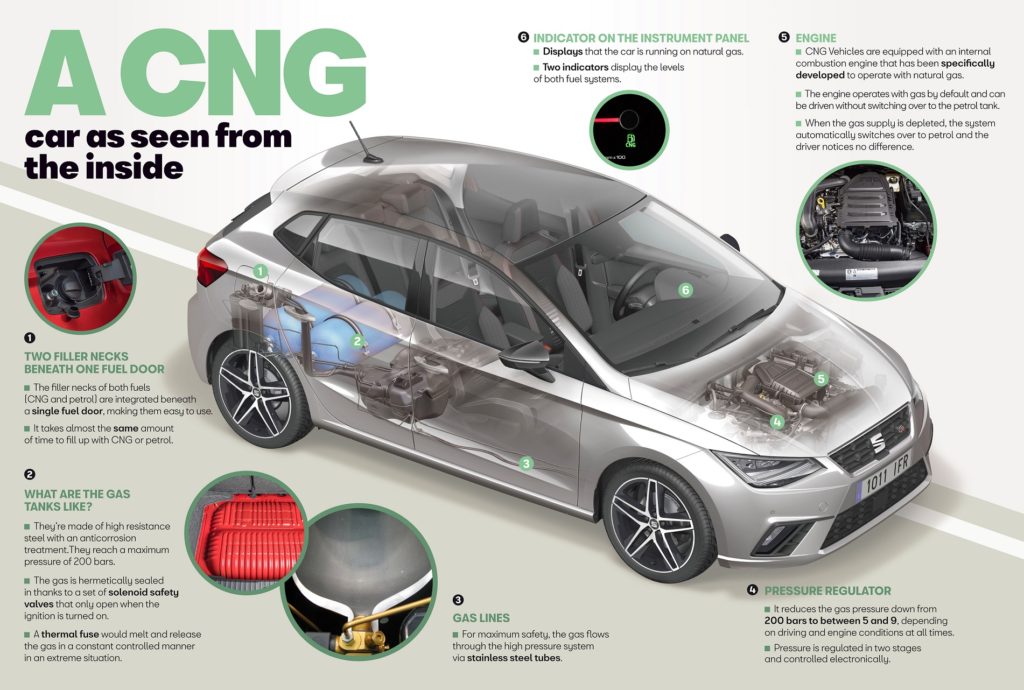
How Gas Cars Work According to Seat
They are eco-friendly, use a more economical fuel and are as safe as a gas or diesel car. But do we really know how gas cars work?
Andrew Shepherd and Antonio Calvo, SEAT specialists in compressed natural gas (CNG), describe these vehicles on the inside:
Two refueling points in the same fuel nozzle: when the fuel filler flap is opened, the driver immediately sees the fuel nozzles for both fuels. Refueling is similar to that of a gasoline or diesel car. The position of the nozzle is the same and takes about the same time. Moreover, when it is made with gas, it does not leak or drip, explains Calvo.
Hermetic tanks: they are under the floor of the luggage compartment, where usually the spare wheel is, and are manufactured of steel of high resistance with anti-corrosion treatment. The safety solenoid valves keep the gas inside completely sealed and only open when the ignition is switched on. The state of conservation of the deposits is certified every 4 years. The components have been tested to withstand extreme conditions: the tanks of this car have a pressure of 200 bar but are manufactured to withstand more than double, so there are no safety issues, explains Antonio Calvo, Director of sustainable mobility at SEAT.
One engine, two fuels: CNG cars have a state-of-the-art internal combustion engine that works indiscriminately with compressed natural gas or gasoline. Normally, the car always circulates with the use of gas until it runs out. The shift to petrol is automatically made and is imperceptible to the driver because the engine performances are identical with the two fuels. The engine integrates many specifically reinforced components for the combustion of natural gas. It meets the most stringent emission standards and proof of this is the ECO seal awarded by DGT to CNG vehicles, explains Andrew Shepherd, SEAT's GNC product manager.
Shockproof: CNG vehicles meet the most demanding industry standards. Cars are subjected to various tests throughout the development phase, such as crashtests, to ensure they are totally safe. In a more extreme case of high temperatures caused by a fire, the gas is released at a constant rate and controlled thanks to thermal fuses placed in each tank, thus avoiding an accumulation, explains Shepherd.
Electronically adjustable and adaptive pressure: Natural gas is stored in tanks at about 200 bar but is injected into the engine at a pressure not exceeding 10 bar. A two-stage pressure regulator, placed in the engine bay, reduces pressure and ensures perfect gas injection in all situations. The engine ECU controls the regulator electronically at all times.
The light that informs the driver: at the wheel, the feeling of driving with natural gas or gasoline is the same. Therefore, the driver can only distinguish which fuel he is using if he looks at the warning light on the dashboard. On, it is running on natural gas; off, with gasoline. In addition, there are other indicators that provide information on the level of each fuel, while the on-board computer shows the driver the data of the trip, including the consumption and the autonomy of each fuel.
GNC, a car like the others: Andrew Shepherd explains that gas cars are developed, manufactured and certified to the highest quality standards in the industry. " "Not even during production, let alone driving, are differences. I usually say that a GNC car is not a "rare bird", but an automobile as reliable and safe as all the others, "concludes Antonio Calvo.
Vasco Reis, de Portugal

Nenhum comentário:
Postar um comentário